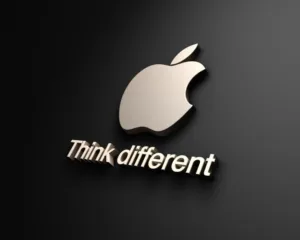I have been away working on a project, and came back to writing recently. I struggled with where to start back. Then, a press release link landed in my inbox.
The press release details the launch of Deloitte Digital’s new Academy for Apple Vision Pro, an initiative to expand its partnership with Apple by providing specialized training in spatial computing. The academy offers week-long, instructor-led courses aimed at engineers, product managers, and business leaders, focusing on integrating Apple’s Vision Pro and visionOS into their business practices. Comments from executives at both Deloitte and Apple in the press release harp on about the importance of this initiative for future enterprise applications of spatial computing. And, according to the hype, the training provided by the academy is intended to develop a workforce skilled in utilizing new technologies for innovation and improved operational efficiency.
You don’t have to scroll far on the pages of Display Daily to see our stance on the Vision Pro, une grande folie, le fiasco. But, we don’t fault Deloitte for sucking up to its, no doubt, biggest corporate client. At this point, it seems as if Apple is going to throw everything it can at the wall of spatial computing and see what sticks. It is quite clear that Apple’s short term strategy, for now, is to recreate that iPhone moment. You can understand why. It was a singular change in the tech industry, a launch of a product that truly changed the world. So, why not do it again.
Of course, if you were a startup founder, and you went in with a business plan that said your sole aim was to recreate an iPhone moment, no one would give you money. They would actually want you to have a disruptive, all your own, new idea. Let’s TikTok that idea with the man himself, Steve Jobs:
@jonerlichman Steve Jobs on starting a business. #quote ♬ UNDERWATER WONDERSCAPES (MASTER) – Frederic Bernard
And it doesn’t help that Apple is dropping innovation when it gets too hard. I really don’t believe that the company was right to stop pursuing MicroLED display development. Sure, it didn’t make sense to launch it on a franchise product like the Apple Watch, worth billions in sales and profits, but innovation is hard, and not driven by existing demand or products.
That’s where I find myself wanting to jump back in, the idea that Apple has dulled its edge because it has no display advantage or strategy. I believe, as a consumer of Apple products, that there was always a notion that Apple’s displays were the best of the best, that the company was years ahead of the pack. But it isn’t. Manufacturers like Xiaomi, Transsion, and even Samsung, have leapt ahead. They have issues with their devices, and they have issues with foldables and flexibles, so what. trying to change things is a little messy. Trying to be different is not always acceptable. Apple’s lost that sense of vision. Too big to fail, and too big to innovate.
Apple could have had a TV, we have said this repeatedly on these pages, and it would have made total sense. The company went from the iMac, the resurgence of its brand, an update of the first Macintosh PCs, to iTouch, a reinvention of the iPod and the segue way to the iPhone. Everything a visual impression on the consumer psyche. TV was the simple and effective choice, the center of the home, a seamless transition from being mobile to flopping on the couch when you get back to base.
Apple could have an EV, and it would make total sense, too, but that may be too much of a leap in risk taking. Apple could have found new ways of delivering foldables, or MicroLED displays that didn’t have to get into the existing product lines, but instead it chose to build a monstrosity called the Vision Pro, which is not even an improvement on experiences that have gone before it, ie, headsets. It is just more expensive, and crammed full of too much tech.
On the bright side, it will take only one upgrade cycle to change the conversations around Apple. The big problem for Apple, one that nearly killed it back in the nineties, is that people can get tired of paying a premium for something that feels the same as anything else or, even, lags behind. The Apple premium can become an onerous tax and that’s what may be happening today.

